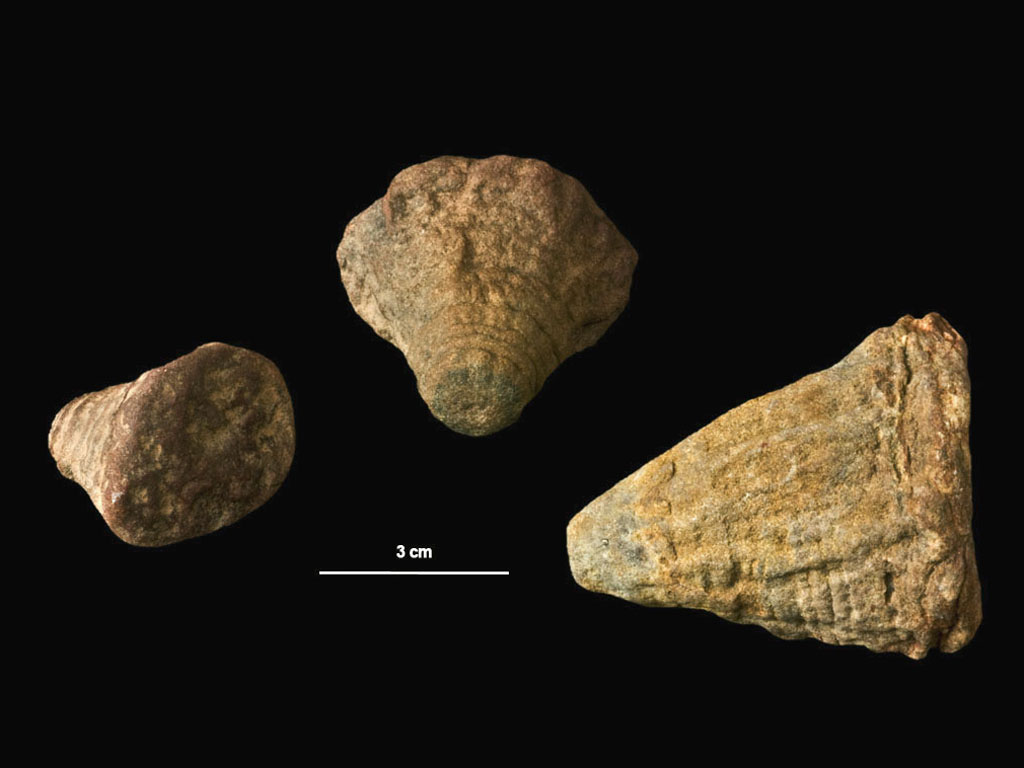
Trace fossils of Conostichus collected in Monroe County, Indiana. Photo by John M. Day and Barbara T. Hill, 2008.
These loose specimens of Conostichus were among many found in the bed of an intermittent stream in southwestern Monroe County, Indiana, where they have weathered out of nearby coal-bearing rocks of Pennsylvanian age. They are considered to be trace fossils, which record the former presence and behavior of animals (as by trails, tracks, burrows, and so on); however, they do not represent the body of the organism nor do they include internal structures by which the organism could be better defined. Conostichus fossils are not rare and have been reported from many localities in surrounding states, but they are known from only a few other sites in Indiana, for example, near Tell City and near Turkey Run State Park.
Conostichus was first described as a marine plant by Leo Lesquereaux, a famous paleobotanist (a student of fossil plants) in 1876 from specimens found in southern Illinois. Because of their radial symmetry, however, they have more recently been thought to be molds of crinoids or burrows of sea anemones. Specimens found in place in their enclosing rocks commonly occur in shale beds that include thin strata of fine sand; the cone-shaped structures broaden upward and it is thought that sand collected in the molds or burrows and then became firmly cemented by iron compounds. Shale weathers easily and so the specimens are released.
The presence of Conostichus specimens indicates that the rock layers in which they are found were deposited in an ancient ocean. This knowledge can be of practical value because coal beds that are overlain by marine strata commonly are high in sulfur content and therefore may be considered less desirable for use as a fuel.


